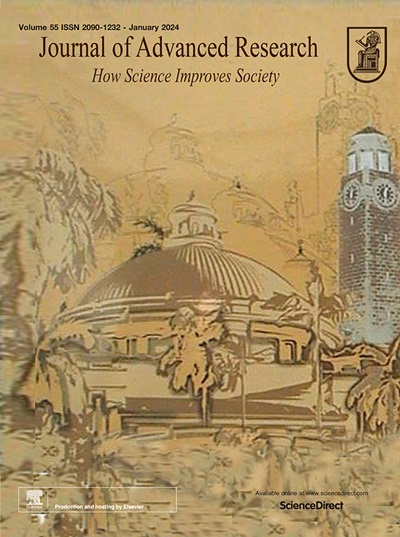全氟辛烷磺酸通过肝脏-肠道微生物群-睾丸轴损害精子发生:鹅去氧胆酸代谢的核心作用
IF 13
1区 综合性期刊
Q1 MULTIDISCIPLINARY SCIENCES
引用次数: 0
摘要
全氟辛烷磺酸(PFOS)作为一种全球性污染物,在环境介质和人体中无处不在。最近发现全氟辛烷磺酸暴露与男性生育能力下降之间的联系。然而,相关机制尚不清楚。目的探讨全氟辛烷磺酸暴露对男性生殖功能的影响及其机制。方法在小鼠全氟辛烷磺酸暴露模型中,采用单核转录组测序技术,在单细胞分辨率下描绘小鼠睾丸的转录组格局。我们检测了血清代谢组学特征,并对肝脏转录组数据集进行了深入分析,以探索全氟辛烷磺酸暴露下肝脏和睾丸之间的代谢联系。通过整合鹅去氧胆酸干预、粪便微生物群移植(FMT)、宏基因组测序、睾丸代谢组、鼠乳杆菌(L. murinus)代谢组和给药,我们确认了肝-肠道微生物群-睾丸轴的作用,筛选了pfos介导的生精障碍的关键肠道微生物群。结果全氟辛烷磺酸暴露导致小鼠睾丸生精阻滞和生精微环境异常。全氟辛烷磺酸抑制肝脏鹅去氧胆酸(CDCA)合成导致血清/睾丸必需脂肪酸(亚油酸)和脂溶性维生素(视黄醇、维生素D3)水平降低,这是导致生精停止的原因。除此之外,全氟辛烷磺酸介导的CDCA生成受损降低了肠道鼠乳杆菌的丰度,这可能通过参与天冬氨酸代谢影响精子发生。据我们所知,我们首次全面评估了全氟辛烷磺酸暴露对生精过程的影响,并阐明了肝-肠道微生物群-睾丸轴在全氟辛烷磺酸诱导的异常生精过程中尚未被认识的作用。结论揭示的器官串音为全氟辛烷磺酸的代谢破坏特性、肝毒性和生殖毒性提供了新的认识,这可能有助于开发基于分子、代谢物和微生物的策略来治疗全氟辛烷磺酸诱导的代谢疾病和生殖障碍。本文章由计算机程序翻译,如有差异,请以英文原文为准。

Perfluorooctane sulfonic acid impairs spermatogenesis via the liver-gut microbiota-testis axis: a central role of chenodeoxycholic acid metabolism
Introduction
Perfluorooctane sulfonic acid (PFOS) as a global contaminant is ubiquitously presented in the environmental media and human body. The association between PFOS exposure and reduced male fertility has been recently discovered. However, the relevant mechanism remains unexplored.Objectives
Our study aimed to investigate the effect and mechanism of PFOS exposure on male reproductive function.Methods
In a murine PFOS exposure model, single-nucleus transcriptome sequencing was performed to delineate the transcriptomic landscape of mouse testes at the single-cell resolution. We examined the serum metabolomic profile and conducted in-depth analysis of hepatic transcriptome datasets to explore the metabolic connections between liver and testis under PFOS exposure. Through integrating chenodeoxycholic acid intervention, fecal microbiota transplantation (FMT), metagenomic sequencing, testicular metabolome, Ligilactobacillus murinus (L. murinus) metabolome, and administration of L. murinus, we confirmed the role of the liver-gut microbiota-testis axis and screened the critical gut microbiota involved in PFOS-mediated spermatogenic disorders.Results
The results showed that PFOS exposure led to spermatogenic arrest and abnormal spermatogenic microenvironment in the mouse testis. The PFOS-repressed hepatic chenodeoxycholic acid (CDCA) synthesis contributed to the reduced serum/testicular levels of essential fatty acid (linoleic acid) and lipid-soluble vitamins (retinol, vitamin D3), which was responsible for the spermatogenic arrest. Beyond this, PFOS-mediated impaired CDCA production decreased the abundance of gut L. murinus, which affected spermatogenesis through the potential involvement of aspartic acid metabolism. For the first time to our knowledge, we comprehensively assessed the effects of PFOS exposure on the spermatogenic process and elucidated the unrecognized role of liver-gut microbiota-testis axis in PFOS-induced abnormal spermatogenesis.Conclusions
The unveiled organ crosstalks provide new insights into the metabolism-disrupting properties, hepatotoxicity, and reproductive toxicity of PFOS, which may facilitate the development of molecule-, metabolite-, and microbe-based strategies for PFOS-induced metabolic diseases and reproductive disorders.求助全文
通过发布文献求助,成功后即可免费获取论文全文。
去求助
来源期刊

Journal of Advanced Research
Multidisciplinary-Multidisciplinary
CiteScore
21.60
自引率
0.90%
发文量
280
审稿时长
12 weeks
期刊介绍:
Journal of Advanced Research (J. Adv. Res.) is an applied/natural sciences, peer-reviewed journal that focuses on interdisciplinary research. The journal aims to contribute to applied research and knowledge worldwide through the publication of original and high-quality research articles in the fields of Medicine, Pharmaceutical Sciences, Dentistry, Physical Therapy, Veterinary Medicine, and Basic and Biological Sciences.
The following abstracting and indexing services cover the Journal of Advanced Research: PubMed/Medline, Essential Science Indicators, Web of Science, Scopus, PubMed Central, PubMed, Science Citation Index Expanded, Directory of Open Access Journals (DOAJ), and INSPEC.
 求助内容:
求助内容: 应助结果提醒方式:
应助结果提醒方式:


